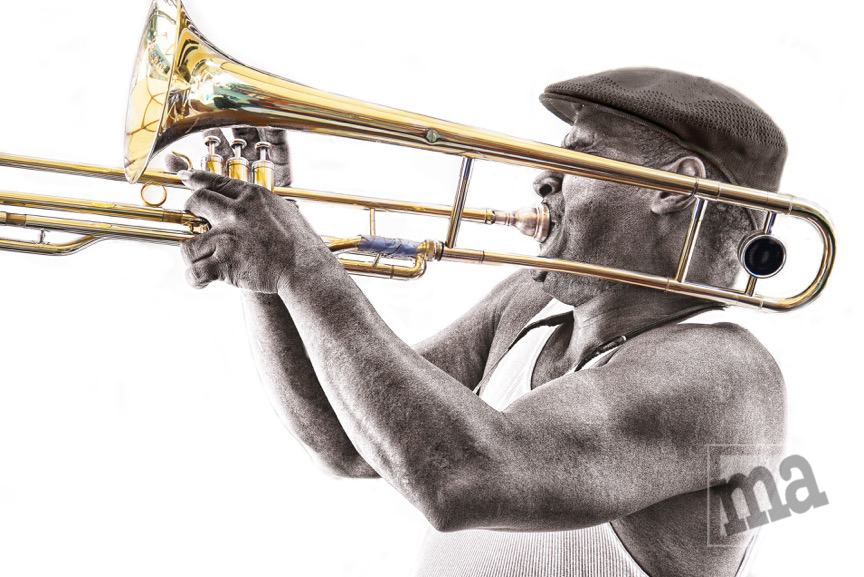On the Creative Edge
PHOTOGRAPHER MARGE AGIN: ON THE CREATIVE EDGE
Story by Carolyn Males, Local Life Magazine

In February 1982 National Geographic infamously moved the Great Pyramids of Giza, nudging two closer together for a more pleasing cover image. Controversy raged and apologies ensued. Altering a photograph was deemed a photojournalism no-no.
Fine art photographer Marge Agin works under no such constraints. And while she’s yet to reposition an Egyptian icon, she’s unapologetic about using digital tools to alter perspective, redirect our focus, and imbue reality with her own creative edge. “I’m not shooting in journalistic mode anymore,” says the Palmetto Bluff resident. “My work is more painterly.”
 Indeed. Like a painter she’ll remove a construction crane from an image she’s shot of the Holy Temple Church in Yemassee and tidy up the bushes along the side of the old two-story building for an evocative image of rural life she’s titled “Faith Express.” Or she’ll erase the background from a huge close-up of a wood stork and sharpen the details of its eye and feathers so that you’ll feel as if you can touch him with your fingertips.
Indeed. Like a painter she’ll remove a construction crane from an image she’s shot of the Holy Temple Church in Yemassee and tidy up the bushes along the side of the old two-story building for an evocative image of rural life she’s titled “Faith Express.” Or she’ll erase the background from a huge close-up of a wood stork and sharpen the details of its eye and feathers so that you’ll feel as if you can touch him with your fingertips.
A petite woman, Agin totes two pro Canon EOS cameras equipped with fast heavy lenses. She takes aim at “anything in front of me that happens to interest me.” Her first click is always on automatic in raw image format. Her philosophy? “Just get the shot.” Then she brack-ets exposures and plays around with settings. “I’m a great believer in moving the dials.” She doesn’t use flash and rarely carts a tripod except when she’s shooting birds with her massive 600mm lens.
On her quest for interesting subjects, she’ll lie prone on the deck of a boat, her wide angle lens tilted up to catch a shrimper’s net mid-fling. Or she’ll drape herself over a fence to capture a rustic red barn in a Kentucky field. For one of her photographic books, What It Means to Be Here, she and her husband, Norm, drove through tiny Southern towns and hung out in soda shops, chatting up locals who suggested spots to explore with her camera.
Then it’s back to her “digital darkroom,” a Mac computer loaded with Photoshop. Here, she explains, is where the magic happens. “I never know what the image will be until I get into it. It’s a process of discovery.” She is fearless as she experiments with filters and layers, saturating or changing colors, adding or subtracting texture, removing or replacing backgrounds, blurring or sharpening. Finishing a single image can take a day, month or more. Then she prints them up large scale.
When asked how many steps she takes to create a particular photo, she answers with a shrug. “I don’t duplicate a process so each image is an experiment––much like painters do.”
 For example, while in New Orleans a trombone player in the French Quarter caught her eye. In the original shot, he’s flanked by a window, a vertical pole, and a bicycle. As a journalistic photo it’s good but when she painstakingly erased the background, bumped up the texture of the musician’s skin, and toned down the overall color, she transformed it into a great picture. With the peripheral distractions removed, our gaze now focuses on the man and his horn and catches details like metallic reflections and the tape he’d wrapped on the slide.
For example, while in New Orleans a trombone player in the French Quarter caught her eye. In the original shot, he’s flanked by a window, a vertical pole, and a bicycle. As a journalistic photo it’s good but when she painstakingly erased the background, bumped up the texture of the musician’s skin, and toned down the overall color, she transformed it into a great picture. With the peripheral distractions removed, our gaze now focuses on the man and his horn and catches details like metallic reflections and the tape he’d wrapped on the slide.
Ditto for the Kentucky barn photo. Agin concedes that the original she took was a nice picture of a red barn but nothing special — at least not yet. In fact, everyone in her car was moaning, “Do we have to wait while you take that?” Once home, she wiped out the mundane background, replacing it with a misty gray morning sky, and then kicked up the red of the wood planks for a striking image of a lost way of life.
When asked for advice, Agin offers up her own philosophy. “You can really have fun with photography. You don’t have to be so serious. Don’t worry if it isn’t perfect. How many times have you had a picture that was under-exposed or overexposed that you got it home and said ‘oh, that’s pretty good? I can do something with it.’” She smiles. “It happens all the time.”
